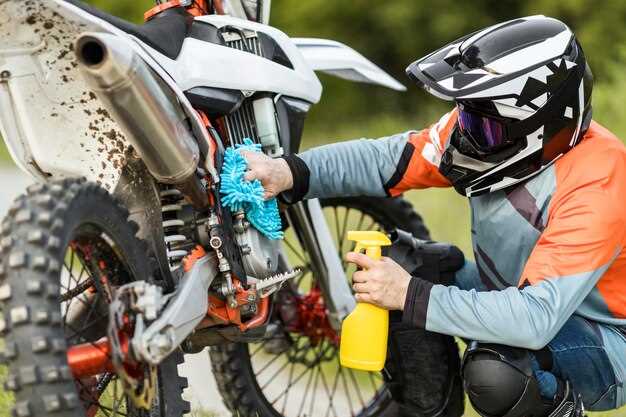
As a dedicated rider, ensuring the longevity and performance of your riding gear is essential. Proper washing and maintenance not only enhance the lifespan of equipment but also improve safety and comfort during your rides. This guide aims to provide you with practical tips and step-by-step instructions for effectively cleaning and caring for various types of riding gear, including jackets, pants, gloves, and helmets.
Riding gear is exposed to a range of elements, including dirt, sweat, and harsh weather conditions. Over time, these factors can degrade materials, compromise waterproofing, and diminish the overall effectiveness of your gear. Therefore, understanding the specific cleaning methods and suitable products for different materials is crucial. In this comprehensive guide, we will explore best practices, common mistakes to avoid, and recommended products to help you maintain your riding gear in peak condition.
Whether you are a casual rider or a seasoned professional, taking the time to care for your gear will pay off in the long run. With the right techniques, you can ensure that your equipment remains clean, functional, and ready for your next adventure. Let’s delve into the essential practices for washing and caring for your riding gear.
Choosing the Right Cleaning Products for Different Materials

When it comes to maintaining riding gear, selecting the appropriate cleaning products is essential, as different materials require different care. Using the wrong product can damage the material and shorten the lifespan of your gear.
For leather gear, opt for a gentle leather cleaner that is specifically formulated to remove dirt and oil without stripping the natural oils from the leather. After cleaning, apply a conditioner to keep the leather supple and protected from moisture. Avoid using harsh soaps or all-purpose cleaners that may cause the leather to dry out or crack.
Nylon and polyester riding gear are common for jackets and pants. Use a mild detergent that is free from bleach and strong chemicals. Look for detergents labeled as safe for synthetic fabrics. Always follow the care instructions provided by the manufacturer. For tough stains, spot-clean with a dedicated fabric stain remover before washing.
For mesh fabrics, such as those found in ventilated riding jackets, it’s vital to use a cleaner that is capable of penetrating the mesh structure without causing damage. A mild soap with water is often sufficient. Avoid fabric softeners, as they can clog mesh pores and reduce breathability.
If your gear has waterproof membranes, choose cleaning products that are specifically designed for waterproof fabrics. These products will clean the gear while maintaining the integrity of the waterproof coating. After washing, reapply a waterproofing treatment to restore the protective layer.
For padding and armor components, make sure to check the care instructions. Many can be gently wiped with a damp cloth and mild soap. If removable, wash them separately but avoid submerging them in water unless specified by the manufacturer to preserve their shape and functionality.
In summary, understanding the material composition of your riding gear is key when selecting cleaning products. Always prioritize the specific needs of each material, choose gentle cleaning agents, and follow the manufacturer’s care instructions for the best results.
Step-by-Step Instructions for Washing Jackets and Pants
Before washing your riding gear, always check the care labels for any specific instructions provided by the manufacturer. This ensures that you maintain the integrity and functionality of the gear.
1. Loose Dirt Removal: Start by using a soft brush or a damp cloth to remove any loose dirt or debris from the surface of the jackets and pants. This is crucial to prevent dirt from embedding into the fabric during the wash.
2. Zipper and Velcro Check: Ensure all zippers are zipped up and Velcro straps are secured. This prevents snags and damage during the washing process.
3. Turn Inside Out: For jackets and pants, turn them inside out. This protects the outer fabric and keeps the inner lining clean while preventing color fading.
4. Use a Mild Detergent: Select a mild, non-abrasive detergent that is suitable for technical fabrics. Avoid bleach and fabric softeners, as they can damage the performance of the gear.
5. Washing Machine Settings: Set your washing machine to a gentle cycle with cold water. This helps prevent shrinking and damage to waterproof membranes.
6. Hand Washing Option: If preferred, hand wash your clothing in a bathtub or large sink. Fill it with cold water and detergent, and gently agitate the garments before rinsing thoroughly to remove soap residues.
7. Rinse Thoroughly: Make sure to rinse the jackets and pants thoroughly to eliminate any detergent residues, which can irritate skin and affect the fabric’s breathability.
8. Air Dry: Avoid using a dryer. Instead, hang the jackets and pants in a well-ventilated area away from direct sunlight. This prevents fading and helps maintain the shape of the gear.
9. Re-waterproofing: After washing, consider reapplying a water-repellent treatment if the garment is designed to be waterproof. Follow the manufacturer’s instructions regarding the application of such treatments.
10. Storage: Once completely dry, store your riding gear in a cool, dry place. Avoid folding them tightly to prevent creases and potential damage to any protective elements.
Maintenance Tips for Prolonging the Life of Your Riding Gear

Proper maintenance of your riding gear is essential to ensure its longevity and functionality. Begin by regularly inspecting your gear for any signs of wear and tear. Look for damaged seams, frayed straps, or cracked armor, as these issues can compromise safety and performance.
After each ride, clean your gear thoroughly. Use a damp cloth to wipe off dirt, dust, and sweat. For textile gear, a gentle wash with mild soap and water is recommended. Always follow the manufacturer’s washing instructions and avoid harsh chemicals that can degrade materials. Leather gear requires special attention; use a leather cleaner and conditioner to keep it supple and prevent cracking.
Dry your riding gear properly. Avoid direct sunlight and heat sources, as these can cause materials to weaken or fade. Instead, allow your gear to air dry in a well-ventilated area. For leather, make sure it’s completely dry before applying conditioner or storing it away.
Store your riding gear in a cool, dry place when not in use. Hanging it on a padded hanger helps maintain its shape. Consider using garment bags, especially for jackets and suits, to protect them from dust and environmental damage. Ensure that gear is stored away from sharp objects that could cause punctures or abrasions.
Replace any worn-out components, such as visors, zippers, or buckles, to maintain the integrity of your gear. Regularly check for proper functionality and ensure that any reflective materials are intact to keep you visible during rides.
Finally, consider professional cleaning and inspection services periodically, especially for more specialized gear. This can help identify hidden issues and extend the overall lifespan of your riding equipment.